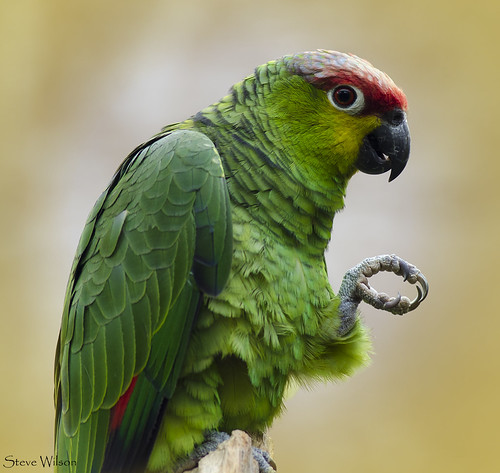 Ecuador Amazon parrot. Image by Steve WilsonA TEAM of experts from Chester Zoo are going on an expedition to South America in search of a rare parrot.
Ecuador Amazon parrot. Image by Steve WilsonA TEAM of experts from Chester Zoo are going on an expedition to South America in search of a rare parrot.
A team of 10, including experienced conservationists, bird and horticultural experts, will survey the remote Cerro Blanco Forest in the Amazon jungle in South West Ecuador.
Their aim is to track and collect vital data on the Ecuador Amazon parrot – a bird newly recognised as a species in its own right.
Until recently, the Ecuador Amazon parrot was considered to be part of a group not seen as a conservation priority.
But years of research by the zoo’s director general Dr Mark Pilgrim has led to its reclassification and a conservation action-plan is now being put in place.
Dr Pilgrim, who is leading the expedition, said: “Previously, the Ecuador Amazon parrot was considered to be one of four subspecies, which has an estimated population of about five million birds.
“As a result of the size of the population, it did not rank among conservationists priorities.
“However now that we’ve identified just how important this parrot is – that it is in fact a full species – it means it can now get some protection. It’s vital that this happens now, as we fear there could be as few as just 600 left.
“The Chester Zoo team is therefore going out to South America to try and resolve as many of the unanswered questions that surround this species as possible. We need to know what trees the parrots prefer to nest in, how many of those trees are left, what they feed on and what else may compete for that food in the forest. Once we have more information, we can then look at how we can raise the level of protection of Cerro Blanco and for the parrots.
“Ultimately the work and research the team will do is essential for the survival of this species in the wild. It could potentially help save these parrots from becoming extinct.”
Despite the protected status of Cerro Blanco forest and the nearby mangroves of the Bosque’s El Salado Reserve – between which the parrots make daily flights – the Ecuador Amazon faces continued threats from the destruction of mangroves for urban expansion, the cutting of trees for charcoal production and use in construction and their capture for the pet trade.
To follow the team’s progress through blogs, updates and photos via the zoo’s conservation website at www.actforwildlife.org.uk and www.facebook.com/actforwildlife